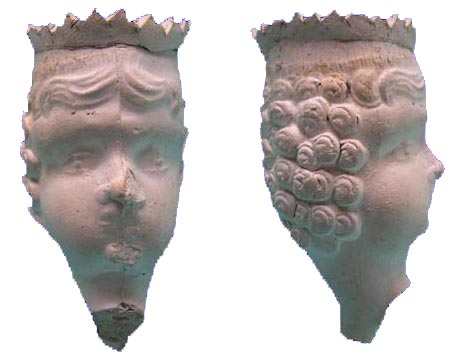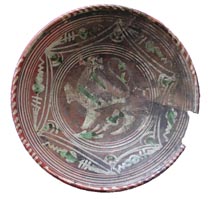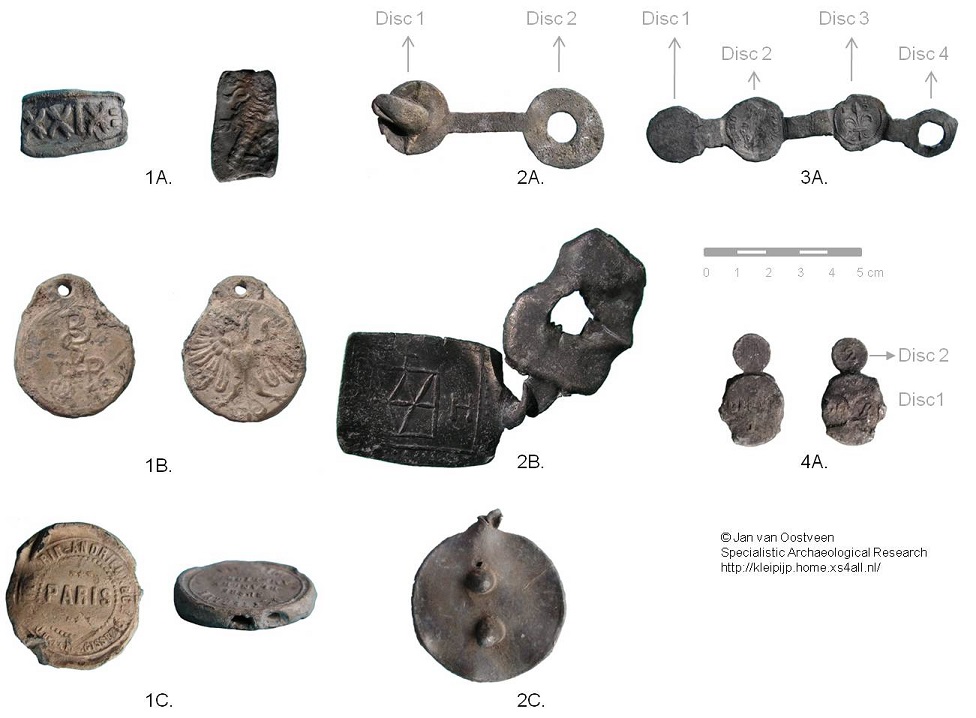

![]()
¨ Home
¨ Glass
¨ Ceramics
¨ Other
¨ Contact
Seals typology
Four main types of seals are distinguished
Type 1: One disc without connecting strip
Type 1a is a hollow seal. This hollow seal was pushed over the wires of the textile. After that a mark was stamped on the seal. If the seal was used to identify the owner of the textile, the private mark was stamped on it. In other cases the number of wires were controlled by an inspector. He stamped the number of wires on the seal (in this case 29) and the coat of arms of the city (in this case Leiden) on the onther side. These kind of seals can roughly be dated between 1300-1800.
Type
1b
is a massive seal with an eye. These kind of seals were use by
copper
and brass manufacturers in for instance Sweden and Germany.
These kind
of seals are identified form Louis de Geer (Sweden) and the
Momma
family (Aachen). These kind of seals are dated in the 16th/17th
century.
Type
1c
is a common massive bag seal without an eye. These kind of seals
were
introduced in the second half of the 18th century and are used
up to
the present day.
Type 2: Two discs with connecting strip
Type 2a contains two discs and one pin. The discs are connected by a strip. These kind of seals are common and can be dated from the mid of the 12th century untill the late 18th century. This type has been widely used.
Type
2b
is a typical British searcher seal. Most of the time on one side
information about the searcher (name, private mark etc) and on
the
other side information about the searched textiel: Long, size,
waight.
These searchers seals are dated in the 16th/17th and probably
18th
century.
Type
2c contains two discs and two
pins. The discs are connected by a strip. These type of seals
are known
from the 15th untill the beginning of the 18th century. This
type has
been widely used.
Type 3: Four discs with two connecting strips
This four disc type is a
typical British Alagne seal. It can be dated in the 17th/18th
century.
Type 4: Two discs without a connecting strip
This two disc type without
an connecting strip can be dated from the second half of the
19th
century untill the 20th century. It is known that this type of
seal was
used by the German Railways but British examples are also known.

Literature
Oostveen, J. van, 2013.
Textielloden. In: Westerheem, February 2013, p. 8-20.
-
Production centres;
France
Great-Brittain
Poland
Sweden
Switzerland
- Private
marks;
Links:
Colchester Treasure hunting & metal detecting
Franse zegelloden: plombdescelle
Franse textiel- en zegel loden: forum
Die "Fakalienfelder" meiner stadt
Santa Margarita Lead bale seal
![]()